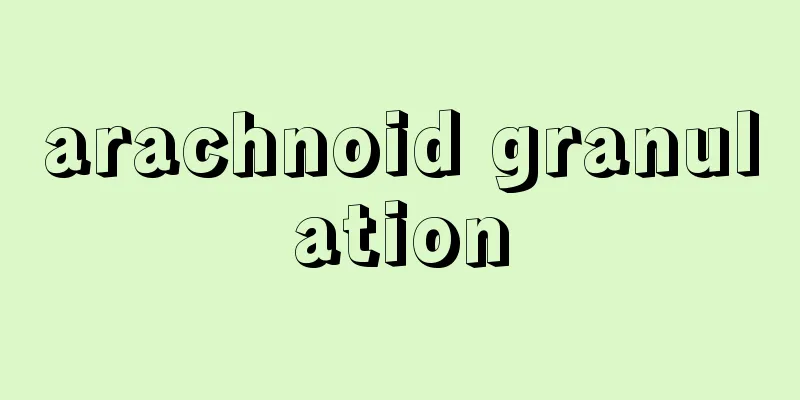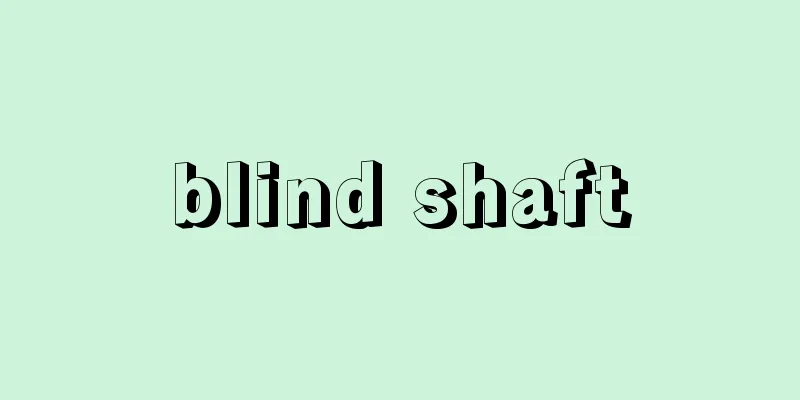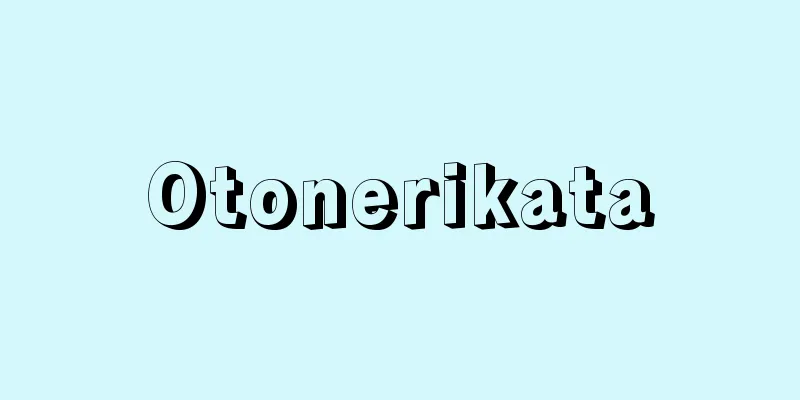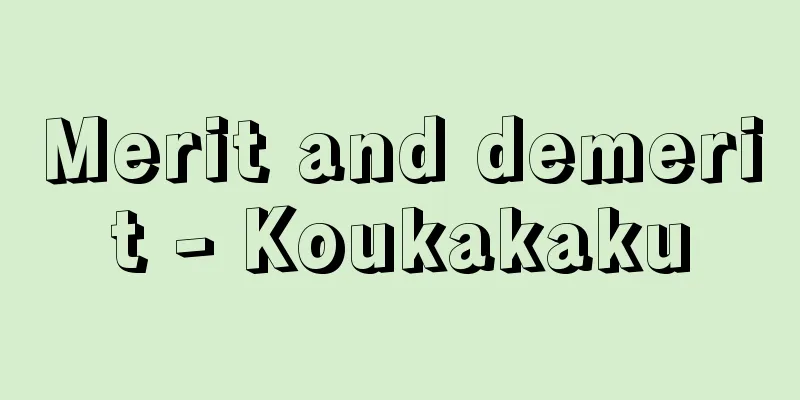Epigraphy - Epigraphy
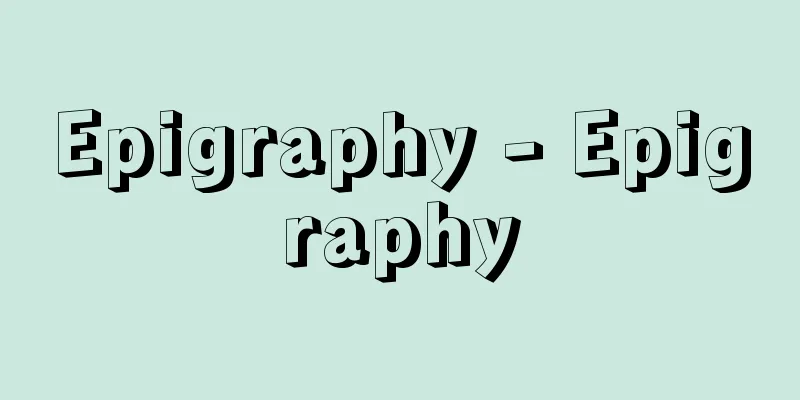
|
A document that attempts to convey some kind of message by inscribing letters or certain symbols equivalent to letters on a durable material for the purpose of record-keeping or commemoration. [Musha Sho] Western epigraphyIn the Orient, including Egypt, Mesopotamia, and Asia Minor, as well as in Greece and Rome, characters were usually inscribed on clay tablets and wood in addition to stone and metal. The Rosetta Stone, discovered during Napoleon's Egyptian expedition, is known for providing the first clue to deciphering Egyptian hieroglyphs (sacred writing), but hard stones such as the inner walls of the Gizeh pyramids, obelisks, palettes, scarabs, and temple pillars were often used. The hieroglyphs seen on King Tutankhamun's golden mask are an example of inscription on metal. Papyrus paper was also written with a brush and used as scrolls. Cuneiform writing, which began in the Mesopotamian region, developed from pictographs and is thought to have been invented by the Sumerians around 3000 BC. This cuneiform writing was adopted by various ethnic groups with different languages and spread widely throughout the Orient. After the Akkadian dynasty used cuneiform to transcribe Semitic languages, King Hammurabi of the Old Babylonian dynasty left behind the Code of Hammurabi in cuneiform, and a large number of cuneiform documents inscribed on clay tablets have been discovered at the site of the royal palace of Ashurbanipal of the Assyrian Empire. The Behistan inscription in Iran, discovered by the British scientist Rawlinson, is known for having made a major contribution to the deciphering of cuneiform, and contains the accomplishments of Persian King Darius I in three languages: Old Persian, Elamite, and Babylonian. In 1900, Evans excavated Knossos on the island of Crete and discovered the remains of a royal palace and numerous clay tablets. Among them were carved pictographs similar to Egyptian hieroglyphs, and two types of linear characters, A and B, which differ in distribution and age. In recent years, progress has been made in deciphering linear characters B, which have also been found in Mycenae and Tiryns on the Greek mainland, and the history of the Cretan-Mycenaean civilization is becoming clearer. The Boğazköy documents left by the Hittites in Asia Minor also use cuneiform characters. The Amarna letters, discovered in Egypt in 1887, contain letters addressed to the Egyptian king from Oriental countries in the 15th and 14th centuries BC, and all but two of the 380 or so letters were written in Akkadian cuneiform characters. In this way, cuneiform characters were used by many peoples in the ancient Orient and had a great influence on them. The origin of the alphabet dates back to the 16th century BCE, when the Semitic peoples of the Sinai Peninsula created the Sinaitic alphabet based on Egyptian hieroglyphics. It is said that the Sinaitic alphabet spread northward and became the Phoenician alphabet. Because of its convenience, it was passed on to the Aramaeans, Hebrews, and Greeks, and was passed down to the European languages of today. Greek and Latin epigraphy was mostly carved into stone, but copperplate, pottery, wood, and lead plates were also used. The contents are extremely diverse, ranging from politics, economics, religion, and art to the lives of ordinary people, and it is one of the main sources for research on Greek and Roman history. The signatures of potters and painters, which are often found on Greek pottery, have helped to determine the chronology of Greek pottery, and ancient Christian epigraphy, a branch of Latin epigraphy, plays a major role in understanding the actual situation of early Christians. [Musha Sho] Oriental epigraphyChinaChinese epigraphy refers to characters written on tortoise shell, animal bones, metal, stone, clay seals, pottery, tiles, bamboo, and wood before the widespread use of paper. Oracle bones, which are characters carved on tortoise shell and animal bones (and occasionally human skulls), and bronze inscriptions, which are inscriptions cast into metal, are important contemporary historical materials for exploring the history, society, and culture of the Yin and Zhou dynasties. The oracle bones discovered in 1899 became a rich source of historical material, with works such as Liu Tieyun's Tieyun Canggui, Luo Zhenyu's Yinxu Shujie Part 1, Tong Jinghua, Part 2, and Part 3, and a brilliant researcher named Wang Guowei appeared, proving that the genealogy of the Yin kings recorded in the Records of the Grand Historian was almost correct. At the same time, the value of oracle bones as historical materials came to be recognized, and the history of the Yin dynasty was reconstructed by deciphering the oracle bones, which laid the foundations for oracle bone studies. The scientific excavation of the Yin ruins at Xiaotun, Anyang County, Henan Province, which lasted for 10 years from 1928, clarified the relationship between the strata and periods of the oracle bones, and Dong Zuobin, who participated in the excavation, marked a turning point in the study of Yin history by showing the differences in content, form, and characteristics of the oracle bones from five different periods in his book "Examples of Research on Oracle Bone Inscriptions." Today, with the increase in new oracle bone materials unearthed at Xiaotun, Dong Zuobin's five periods have been revised, and the structure of Yin society, which was made up of various groups, is being explored. Among metals, bronze is called auspicious metal, and bronze inscriptions, which are inscriptions cast into it, have been valued as historical materials for studying the history of the Shang and Zhou dynasties since the Song dynasty. Bronze inscriptions only appeared in the late Shang dynasty, and most of them were simple inscriptions such as pictorial inscriptions that were clan symbols or names of ancestors written in the ten heavenly stems (jikanmei), with inscriptions of up to 30 characters long appearing towards the end of the Shang dynasty. The Western Zhou dynasty, which was established after overthrowing the Shang dynasty, inherited the large number of bronze artisan groups that had been held by the Shang dynasty, and actively used bronze artefacts as a powerful means of controlling various clans. In the early Western Zhou dynasty, there are many examples of inscriptions that record rewards given for rituals and conquests, which shows the expansion of the Western Zhou dynasty's control. There are few examples with more than 100 characters, but the Zun Inscription, thought to have been made in the 5th year of King Cheng's reign, records the relocation of the capital to Chengzhou in 122 characters. In the middle and late Western Zhou period, records of ceremonies for the investiture of officials, gifts, and arbitration of land disputes suddenly increased. The Mao Gongding Inscription, which has a lengthy inscription of nearly 500 characters, has many similarities to the chapter on the life of Wen Hou in the Shangshu, increasing the reliability of historical documents and providing a valuable historical document that conveys the actual investiture of officials at the time. Meanwhile, during this period, there also appeared examples of documents in which feudal lords recorded gifts given to their vassals in the formal style of the dynasty. This shows that feudal lords had already accumulated enough power to produce bronze vessels and had an increasing number of people with economic power. After the Spring and Autumn period, inscriptions no longer clearly record the relationship between the Zhou dynasty and the feudal lords. They not only show the position of the bronze makers, but also use various writing styles that make use of the characteristics of each region. Some bronze weapons such as spears and swords have absolute dates that can be known, and they are important historical materials that indicate the standard of dates. Characters are also written on coins and mirrors, and the inscriptions on Shang Yangliang and Tiequan are good examples that show the actual state of the unification of weights and measures in Qin. Stone inscriptions from the Spring and Autumn period include stone drum inscriptions from Qin that have been known since the Tang dynasty, and the inscription of Li Hou Jia Zheng (Li Hou Jia Zheng), excavated from Han Tomb No. 1 in Mawangdui, Changsha, is an example of a clay seal. The ceramic inscriptions excavated from Wucheng in Jiangxi belong to the Neolithic period, but are thought to be symbols equivalent to characters. The number of unearthed pieces of script has been increasing in recent years. These include the Shanxi Hou Ma Alliance Document, which is a pledge to resolve conflicts within the state of Jin during the Spring and Autumn period; the Qin Law excavated at Yunbo Suikochi in Hubei; and Sun Tzu's Art of War and Sun Bin's Art of War, both excavated at Yinqueshan in Shandong. These are known to have roughly uniform writing. [Musha Sho] KoreaKorean epigraphy includes the Yan Ming Dao coins from the Warring States period and a spear bearing the inscriptions "25th year Shangjun," "Lakto," and "County capital," but the bronze bell from Hyomun Temple, the Buyo Chang Seal, and the Lelang Seal are also known as direct links to the Korean peninsula. Historical materials from the Later Han dynasty onwards include bricks discovered in the areas of Lelang and Daifang Commandery, which bear the era names of Wei, Jin, and Eastern Jin from the Later Han period, indicating close ties with China. The Gwanggaeto Stele of Goguryeo has generated a lot of attention due to the theory that part of the original monument was a forgery, and we await the results of on-site investigations of the inscriptions. Along with the Gwanggaeto Stele, the inscriptions on the Gwanggaeto Jars and the Silver Inscription with the Inscription of Yeonsu are historical materials that tell the story of the relationship between Goguryeo and Silla. The articles on the Silla King Jinheung Stele and the epitaph of the tomb of Baekje King Muryeong match the descriptions in the Samguk Sagi and Nihon Shoki, and are good examples of how epigraphic inscriptions have increased the credibility of historical documents. There are also other well-known inscriptions that describe the realities of rule, such as the Buddha statue halo with the inscription dated the 5th year of Kenxing, the Sataek Chiseki Stele, Silla's Namsan Shinseong Stele, Bojutsu Fortress Stele, and Yeongcheon Seongjeong Stele, all of which have Baekje's own era name. [Musha Sho] JapanThe most common items of epigraphy in Japan are items made of gold and stone, but examples can also be found on wood, cloth, and bone and horn products. The oldest known example of epigraphy is a gold seal unearthed in Shikanoshima, Fukuoka Prefecture, which is chiseled with the words "King of Na in Han." This inscription matches an article in the Book of the Later Han, which says it was bestowed on the king of Na in the second year of the Zhongyuan era (57) under Emperor Guangwu of the Later Han Dynasty, but there are differing views on how it is read, and it is difficult to imagine that a gold seal was bestowed on the king of Na in Wa. Other heirlooms include a sword unearthed at Todaijiyama Tomb in Tenri, Nara Prefecture, which bears the era name of the Later Han Dynasty's Zhongping (184-189), and a Seven-Branched Sword in the possession of Isonokami Shrine, which has an inscription of 61 characters on both sides, including the words "fourth year," "Paekche," and "King of Wa," inlaid in gold, making it an important historical document that tells of the international relations of the time. The oldest metal and stone inscription made in Japan is an inscription on a mirror handed down at Suda Hachiman in Hashimoto, Wakayama Prefecture. The inscription, which begins with "The year of Mizunotohitsuji, the 10th day of August, the year of the great king," is said to date to the reign of Emperor Ojin, and is thought to match a description in the Nihon Shoki. The iron sword excavated from the Eda Funayama Tomb in Nagomi-cho, Kumamoto Prefecture is inscribed with the words "chitenka" and "tooth king," and is therefore understood to have been made during the reign of Emperor Hanzei. The iron sword excavated from the Inariyama Tomb in Gyoda City, Saitama Prefecture, became a hot topic in 1978 when it was discovered that it had a 115-character gold inlay inscription. There is still debate over the words "Shinhai-nen Shichigatsu Chuki" and "Wakatakeru (ro) Daio," and so along with the inscription on the sword from the Eda Funayama Tomb, this is an important contemporary historical document, and should be treated with great caution as such. [Musha Sho] "Introduction to Hieroglyphics, by Kato Ichiro (Chuko Shinsho)" ▽ "Introduction to Cuneiform Writing, by Sugi Isamu (Chuko Shinsho)" ▽ "Commentary: A Challenge to Ancient Writing, by Yajima Fumio (1980, Asahi Shimbun)" ▽ "The World of Oracle Bone Script, by Shirakawa Shizuka (Heibonsha, Toyo Bunko)" ▽ "The World of Bronze Inscription, by Shirakawa Shizuka (Heibonsha, Toyo Bunko)" ▽ "The Mysterious Seven-Branched Sword, by Miyazaki Ichijo (Chuko Shinsho)" The Book of the Dead is written on the back (right in the photo). New Kingdom period (c. 1550-1295 BC) Greenstone 6.2 x 4.4 x 2.4 cm Collection of the Metropolitan Museum of Art "> Heart Scarab Assyrian King Ashur-uballit I probably presented this to Egyptian King Amenhotep IV. New Kingdom period (c. 1353-1336 BC) Clay 7.7 x 5.5 cm Excavated at Tell el-Amarna, Egypt . Collection of the Metropolitan Museum of Art . Amarna Texts Source: Shogakukan Encyclopedia Nipponica About Encyclopedia Nipponica Information | Legend |
|
記録の保存や記念のために、文字または文字に準ずる一定の記号を耐久性のある素材に記して、なんらかの意志を伝達しようとする文書。 [武者 章] 西洋の金石文エジプト、メソポタミア、小アジアなどオリエント世界やギリシア、ローマでは、通常、石と金属のほかに粘土板、木材などに文字が刻まれた。ナポレオンのエジプト遠征のとき発見されたロゼッタ石は、エジプトのヒエログリフ(神聖文字)の解読に最初の手掛りを与えたことで知られているが、ギゼーのピラミッド群の内壁やオベリスク、パレット、スカラベ、あるいは神殿の石柱など硬い石がよく用いられた。ツタンカーメン王の黄金のマスクにみられるヒエログリフは、金属に刻まれた例である。またパピルス紙には筆で書いて巻物として用いた。メソポタミア地方で始まった楔形(くさびがた)文字は、絵文字から発達したものであり、紀元前3000年ごろシュメール人が発明したものと考えられている。この楔形文字は、言語を異にする各種の民族によって採用され、広くオリエント世界に普及した。アッカド王朝が楔形文字を利用してセム語を写して以後、古バビロニア王朝のハムラビ王は楔形文字によってハムラビ法典を残し、アッシリア帝国のアッシュール・バニパルの王宮址(し)からは粘土板に刻まれた楔形文書が大量に発見されている。イギリスのローリンソンが発見したイランにあるベヒスタンの碑文は、楔形文字解読に大きく寄与したことで知られるが、古代ペルシア語、エラム語、バビロニア語の3種の言語によってペルシア王ダリウス1世の事績が刻まれていた。 1900年、エバンズがクレタ島のクノッソスを発掘し、王宮の跡や多数の粘土板を発見した。そのなかに、エジプトのヒエログリフに似た絵文字と、分布および年代の異なるA、B2種の線状文字が刻文されていた。近年、ギリシア本土のミケナイ、ティリンスなどからも発見される線状文字Bの解読作業が進み、クレタ・ミケーネ文明の歴史が明らかにされつつある。小アジアのヒッタイト人が残したボアズキョイ文書も楔形文字を使用している。1887年エジプトで発見されたアマルナ文書は、前15~前14世紀のころオリエント諸国からエジプト王へあてた手紙類を内容とするものであるが、380ばかりのうち2通を除いてアッカド語の楔形文字で記されていた。このように楔形文字は古代オリエント世界の多くの民族に利用され、多大な影響を与えたのである。 アルファベットの起源は、前16世紀ごろ、シナイ半島のセム系民族がエジプトのヒエログリフを元にシナイ文字をつくりだしたのが端緒である。シナイ文字が北方に伝わってフェニキア文字となったといわれている。さらにその便利さから、アラム人、ヘブライ人、そしてギリシア人へと伝わり、今日のヨーロッパ諸語へと受け継がれた。ギリシアやラテン金石文は大部分は石に刻まれたが、銅版、陶器、木材あるいは鉛板も用いられた。その内容は政治、経済、宗教、美術から一般庶民の生活に至るまできわめて多岐に及んでおり、ギリシア・ローマ史研究の主要な史料の一つとなっている。ギリシア陶器にしばしばみられる陶工や絵師の署名からは、ギリシア陶器の編年が知られるようになったし、ラテン金石学のうち古代キリスト教金石学は、初期キリスト教徒の実態を知るうえで大きな役割を担っている。 [武者 章] 東洋の金石文中国中国の金石文は、紙の普及する以前に亀甲(きっこう)獣骨、金属、石、封泥(ふうでい)、陶器、瓦磚(がせん)、竹木などに記された文字をさしていう。亀甲獣骨(まれに人頭骨)に刻まれた文字である甲骨文と、金属のうちでも青銅に鋳刻された銘である金文は、殷(いん)・周時代の歴史、社会、文化を探究するうえで重要な同時代史料となっている。1899年に発見された甲骨文は、劉鉄雲(りゅうてつうん)の『鉄雲蔵亀』、羅振玉(らしんぎょく)の『殷虚(いんきょ)書契前編』『同菁華(せいか)』『同後編』『同続編』など史料的に豊富になるとともに、王国維という天才的な研究者が現れ、『史記』殷本紀に記された殷王の系譜がほぼ正しいことが証明された。同時に甲骨文のもつ史料としての価値が認められるようになり、甲骨文解読による殷代史の再構成、すなわち甲骨学の基礎づくりがなされた。1928年から10年間に及ぶ河南(かなん/ホーナン)省安陽(あんよう/アンヤン)県小屯(しょうとん)の殷墟(いんきょ)の科学的発掘調査は、甲骨の層位と時期の関係を明らかにし、発掘に加わっていた董作賓(とうさくひん)が『甲骨文断代研究例』のなかで、五つの時期による甲骨の内容、形式、特質の相違を示して殷代史の研究に一期を画した。今日では新たに小屯で出土した甲骨史料の増加に伴って、董作賓の五期分期に修正が加えられ、さまざまな集団によって構成されていた殷代社会の構造が探究されつつある。 金属のなかで青銅は吉金(きっきん)とよばれ、それに鋳刻された銘文である金文は、古く宋(そう)代以来、殷・周時代の歴史を考究する史料として重んじられてきた。金文の出現は現在のところ殷代後期以降であり、氏族のシンボルマークである図象銘や父祖の名を十干名(じっかんめい)で記す単純な銘が多く、長いものでも30字程度の銘文が殷末に現れるくらいである。殷王朝を打倒して成立した西周王朝は、殷王朝が保持していた多数の青銅器製作の工人集団を受け継ぎ、青銅器を諸氏族支配の有力な手段として積極的に利用した。西周初期には祭祀(さいし)や征伐に伴う賞賜を記す例が多く、西周王朝の支配の拡大を跡づけることができる。字数のうえでは100字を超える例は少ないが、成王5年の製作と考えられる尊(かそん)銘は、成周への遷都を122字で記録するものである。西周中・後期になると官職叙任の儀礼や賜与、所領争いの調停の記録がにわかに増加する。500字に近い長文の銘をもつ毛公鼎(もうこうてい)銘は、『尚書』文侯之命篇(へん)と類似する文が多く、文献史料の信頼性を高めるとともに、当時の官職叙任の実際を伝える貴重な史料となっている。一方、この時期になると、諸侯が自己の家臣に対して賜与する文章を、王朝の形式を踏んで記録する例も現れる。諸侯のレベルですでに青銅器の製作が可能なほどに勢力を蓄え、経済力をもつ者が増えてきたことを示している。 春秋時代以降は、銘文のうえではっきりと周王朝と諸侯との関係を記録する例がみられなくなり、青銅器をつくる側の立場を示すようになるばかりでなく、書体のうえでも各地域の持ち味を生かした、さまざまな書体が使用された。青銅製の武器の戈(か)や剣などには絶対年代を知りうるものがあって、年代の標準を示したものとして重要な史料となっている。また銭、鏡にも文字が記されるが、商鞅量(しょうおうりょう)や鉄権の銘文はいずれも秦(しん)の度量衡統一の実態を示す好個の例である。石文では唐代以来知られている春秋期の秦の石鼓文があり、長沙(ちょうさ/チャンシャー)馬王堆(まおうたい)1号漢墓出土の軑侯家丞(たいこうかじょう)は封泥の例である。江西呉城出土の陶文は、新石器時代に属するものであるが、文字に準ずる記号と考えられる。筆写体の文字の出土が近年増えているが、春秋期の晋(しん)国内の紛争処理を誓約した山西侯馬盟書、湖北雲夢睡虎地(うんぼうすいこち)出土の秦律、山東銀雀山(ぎんじゃくざん)出土の『孫子兵法』『孫臏(そんびん)兵法』などがあり、文字にほぼ統一性が保たれていることが知られている。 [武者 章] 朝鮮朝鮮の金石文としては、戦国時代の燕(えん)の明刀(めいとう)銭や「廿五年上郡」「洛都(らくと)」「郡都」の銘をもつ戈が知られているが、朝鮮半島と直接かかわるものとして、孝文廟銅鍾(こうぶんびょうどうしょう)、夫租長印、楽浪封泥がある。後漢(ごかん)王朝以降の史料に楽浪・帯方郡の領域で発見された磚(せん)(かわら)があげられるが、後漢から魏(ぎ)、晋(しん)、東晋の年号がみえ、中国との関係を密接に示している。高句麗(こうくり)の好太王碑は、原碑の一部偽作説をめぐって話題を提供したが、碑文の現地調査報告が待たれるところである。好太王碑とともに、好太王壺(こう)や延寿銘銀合にみられる銘は、高句麗と新羅(しらぎ)との関係を物語る史料である。新羅の真興王碑や百済(くだら)の武寧王陵の墓誌の記事は、『三国史記』『日本書紀』の記載と合致するところがあり、金石文から文献史料の信憑(しんぴょう)性を高めた好例である。なお、百済独自の年号がみえる建興5年銘仏像光背や砂宅智積(さたくちせき)碑、新羅の南山新城碑、戊戌塢(ぼじゅつう)作碑、永川菁堤(せいてい)碑など、支配の実相を記す碑銘が知られている。 [武者 章] 日本日本の金石文は、金造品と石造品とがもっとも多く、木製・布製のほか骨角製品にもその例がみられる。もっとも古い金石文として著名なのが福岡県志賀島(しかのしま)出土の金印であり、「漢委奴国王」とたがね彫りされている。この銘は、後漢の光武帝中元2年(57)に授けたとある『後漢書』の記事と一致するが、読み方に異説があり、倭(わ)の奴(な)国王に金印が授けられたとは簡単に考えられまい。このほかに伝来品として、奈良県天理市の東大寺山古墳出土の太刀(たち)に、後漢の「中平」(184~189)の年号がみられ、石上(いそのかみ)神宮所蔵の七支刀(しちしとう)に「四年」「百済」「倭王」の語を含む表裏61字の銘が金象眼(ぞうがん)されているが、当時の国際関係を物語る重要な史料となっている。日本でつくられた最古の金石文は、和歌山県橋本市の隅田八幡(すだはちまん)に伝わる画像鏡の銘である。「癸未(みずのとひつじ)の年、八月日は十(とお)か、大王(おおきみ)の年」で始まる銘文は、一説によると応神(おうじん)天皇の世に比定されており、『日本書紀』の記述と符合すると考えられている。熊本県和水(なごみ)町の江田船山古墳から出土した鉄刀には「治天下」「歯大王」の語が刻まれているところから、反正(はんぜい)天皇のときにつくられたと理解されている。埼玉県行田(ぎょうだ)市埼玉(さきたま)の稲荷山(いなりやま)古墳から出土した鉄剣は、1978年(昭和53)に金象眼銘115字の存在が知られ、大きな話題を提供した。「辛亥(しんがい)年七月中記」「獲加多支(わかたける(ろ))大王」の語などをめぐっていまだに論議をよんでおり、江田船山古墳の大刀銘とともに、重要な同時代史料であり、その史料としての取扱いは十分に慎重を期すべきであろう。 [武者 章] 『加藤一朗著『象形文字入門』(中公新書)』▽『杉勇著『楔形文字入門』(中公新書)』▽『矢島文夫著『解説――古代文字への挑戦』(1980・朝日新聞社)』▽『白川静著『甲骨文の世界』(平凡社・東洋文庫)』▽『白川静著『金文の世界』(平凡社・東洋文庫)』▽『宮崎市定著『謎の七支刀』(中公新書)』 裏(写真右)に『死者の書』が記されている。新王国時代(紀元前1550~前1295年ころ) 緑色岩 6.2×4.4×2.4cmメトロポリタン美術館所蔵"> 心臓スカラベ アッシリア王アッシュール・ウバリト1世が、おそらくエジプト王アメンヘテプ4世にあてたもの。新王国時代(紀元前1353~前1336年ころ) 粘土 7.7×5.5cm エジプト テル・エル・アマルナ出土メトロポリタン美術館所蔵"> アマルナ文書 出典 小学館 日本大百科全書(ニッポニカ)日本大百科全書(ニッポニカ)について 情報 | 凡例 |
<<: The period when both metal and stone were used
>>: The Collection of the Golden Stones (English)
Recommend
Pepper-wort
A summer-green aquatic fern of the Marbidaceae fa...
Minamoto no Arihito - The man who grew up
Year of death: Hisayasu 3.2.13 (1147.3.16) Year of...
Interstellar molecules
Molecules that exist in interstellar space. The d...
Japan-Manchukuo Protocol
An agreement concluded between the two countries ...
Pickled overnight - Ichiyazuke
〘 noun 〙① Turnips, greens, etc., finely chopped an...
Intermittent claudication
This is a condition in which severe pain is felt i...
Interjection - Aigatari
...The "Kari-ma" (also "Igo-ri&quo...
Jinan
Also known as "Seinan". Capital of Shand...
Pabst - Georg Wilhelm Pabst
German film director. Born in Raudnitz, Czechoslo...
Oppidum - Oppidum
...Generally speaking, Celtic art has a character...
Aranda School - Arandaha
…He became known and highly acclaimed throughout ...
Nobuo Nakagawa
Film director. Born in Kyoto City. Graduated from ...
House of Fraser
...A luxury department store in London that repre...
Akashi Jiro - Akashi Jiro
Year of death: September 2, 1679 (October 6, 1679)...
César‐Pierre Richelet
1631‐98 French lexicographer. Born into a family o...


